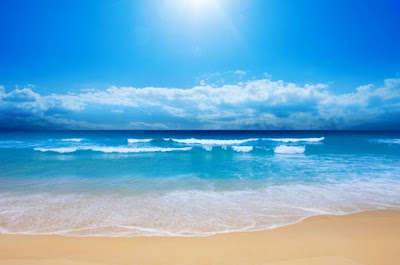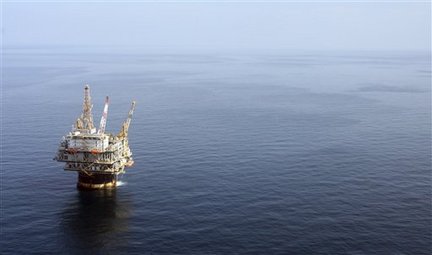
ScienceDaily — A Special Feature of the Proceedings of the National Academy of Sciences presents the latest scientific insights on so-called tipping elements in the planetary environment. These elements have been identified as the most vulnerable large-scale components of the Earth System that may be profoundly altered by human interference. If one or more of those components is tipped -- especially in the course of global warming -- then the age of remarkably stable environmental conditions on Earth throughout the Holocene may end quickly and irreversibly.
This Special Feature was designed and edited by Hans Joachim Schellnhuber of the Potsdam Institute for Climate Impact Research (PIK). It is meant to make a major contribution to the emerging field of sustainability science. The authors involved analyse altogether eight Earth System components. Three of them, the biggest dust source on our planet, oceanic biogeochemical cycles, and marine methane hydrates, are discussed in depth as potential tipping elements for the first time ever.
"It is the cardinal question of Earth System and sustainability science whether global warming actually triggers singular transformations of crucial components of the planetary machinery," says Schellnhuber. Singular transformations -- as opposed to smooth linear and nonlinear ones -- would dramatically alter the environment in which human civilisations have developed and thrived over many millennia. "Currently, the climate system still operates in the Holocene mode, but the research presented here underlines that a rise of the global mean temperature beyond two degrees Celsius might push the world into singular-change terrain and therefore needs to be avoided," Schellnhuber adds.
The PIK scientist has introduced the tipping-elements concept into the research community some ten years ago. It describes components of the Earth System that could be pushed past critical thresholds by anthropogenic forcing, so that they may "tip" into qualitatively different modes of operation. In a recent seminal paper, Tim Lenton from the University of East Anglia, Hans Joachim Schellnhuber and an international group of colleagues presented a formal definition and compiled a short-list of the nine tipping elements ranked as the most policy-relevant. The current Special Feature examines five of these in much more depth: the El Niño/Southern Oscillation phenomenon, Arctic sea-ice and the great polar ice sheets, the Amazon rainforest, the major monsoon systems, and the circulation of ocean currents in the Atlantic Ocean.
In their article, Matthias Hofmann and Stefan Rahmstorf, also from PIK, discuss the last topic, i.e. the stability properties of the Atlantic Meridional Overturning Circulation (AMOC). The authors present new model simulations of the AMOC response to increased freshwater inflow into the North Atlantic. These challenge the hypothesis that the resulting circulation weakening and the possibility of abrupt oceanic change are just artefacts arising from model flaws. Rather, improving the physical realism of the model leads to a greater vulnerability of the projected AMOC stability.
A group of PIK scientists led by Anders Levermann show that every monsoon circulation inherently bears the possibility of an abrupt collapse. The reason is the moisture-advection feedback which is the core of any monsoon system and was captured in a conceptual model by the authors. The monsoon rains are essential for agriculture as the source of livelihood for several hundred million people in the pertinent regions, the authors state.
David Archer from the University of Chicago and his co-authors provide evidence that methane hydrates in ocean sediments should be regarded as a "slow tipping element" in the Earth's climate system. Global warming of some three degrees Celsius could lead to the escape of more than half of the relevant methane stocks, estimated 940 billion tons of carbon, on a millennial time-scale. This hydrate leakage could cause an additional rise in planetary temperature by 0.5 degrees Celsius. The authors tie this increase in global mean temperature to the methane, but it would persist through many millennia because methane is oxidised in about a decade to carbon dioxide, which continues to impact climate for many millennia.
Ulf Riebesell and colleagues from the Leibniz Institute of Marine Sciences (IFM-GEOMAR) describe the oceans as a climate-system component which is presently undergoing major changes. The sea is not only warming, it is also becoming more acidic. Unbridled anthropogenic emissions of greenhouse gases could alter the cycling of carbon and nutrients in the surface ocean and might damage entire marine ecosystems. The authors conclude that the current level of knowledge allows no clear answer on whether tipping points in the marine ecosphere exist, but they regard some of the projected shifts in oceanic biogeochemistry and their impacts as severe.
Mojib Latif and Noel Keenlyside, also of IFM-GEOMAR, present a review of the complicated mechanisms ruling the El Niño/Southern Oscillation (ENSO) phenomenon. It leads to strong temperature and precipitation fluctuations in the Equatorial Pacific from one year to another and has widespread effects on the global climate system. However, current climate models cannot capture the potential tipping point behaviour of the ENSO phenomenon, the authors resume. Given the potentially huge impacts on biological, chemical and socio-economic systems, the question whether global warming will fundamentally alter the ENSO dynamics in the future has to be investigated further.
A research team led by Richard Washington from the University of Oxford qualifies the biggest dust source on our planet, the Bodélé Depression in Chad, as a potential tipping element. This area in the southern Sahara releases huge plumes, which carry about 700,000 tons of dust towards the Atlantic and the Amazon basin. The authors explain that the so-deployed mineral aerosols play a vital role in transcontinental climatic and biophysical feedbacks. If regional wind patterns or surface erosivities changed due to anthropogenic interference, the dust export from the Bodélé Depression could be substantially modified at time scales as small as one season.
A research team headed by Yadvinder Malhi, also of the University of Oxford, has employed nineteen different global climate models to investigate, whether climate change could cause a large-scale dieback of Amazonian rainforest. The analysis based on a scenario with continuously increasing global emissions of greenhouse gases over the 21st century suggests that dry season water stress is likely to increase in parts of Amazonia. The researchers provide evidence that the Amazonian rainforest could reveal characteristic properties of a tipping element with the tendency to change into a seasonal forest.
In his paper on potential threshold behaviour of sea-ice and continental ice-sheets, Dirk Notz of the Max Planck Institute for Meteorology concludes that tipping points more likely exist for the loss of the Greenland ice sheet and the West-Antarctic ice sheet than for the loss of Arctic sea-ice, which could recover rapidly in a cooler climate. Inland ice could be much more vulnerable to regional warming due to the lack of large internal stabilizing feedbacks as existing for the Arctic sea-ice dynamics. Melting of the continental ice-sheets could lead to rapid multi-meter rise in mean sea level over the coming centuries.
Finally, Nobel Laureate Mario Molina and his co-authors demand fast action from political and economic decision makers to avoid activation of tipping elements. They propose to strengthen the Montreal Protocol regarding substances that have high global-warming potentials. In particular, the scientists make strong cases for an accelerated phasing out of hydrochlorofluorocarbons and a massive reduction of the emissions of soot.
"After two decades of failed climate protection since the 1990 IPCC Report it is more doubtful than ever whether society will manage to confine global environmental change to sub-dangerous levels," says Hans Joachim Schellnhuber. The tipping-elements field is developing quickly into a broad and relevant research frontier domain, but the issues pose tough challenges for contemporary science. Practically none of the planetary cases studied can be either dismissed now -- by firmly ruling out a possible anthropogenic triggering of irregular dynamics -- or settled by providing reliable estimates for activation temperatures and reaction time scales. "Many of the papers sketch the research way forward, but it seems that we will have to live with at least another decade of tantalising ignorance concerning the most worrying potential impacts of global warming," says Schellnhuber.
Source:
http://www.sciencedaily.com/releases/2009/12/091209193728.htm

















